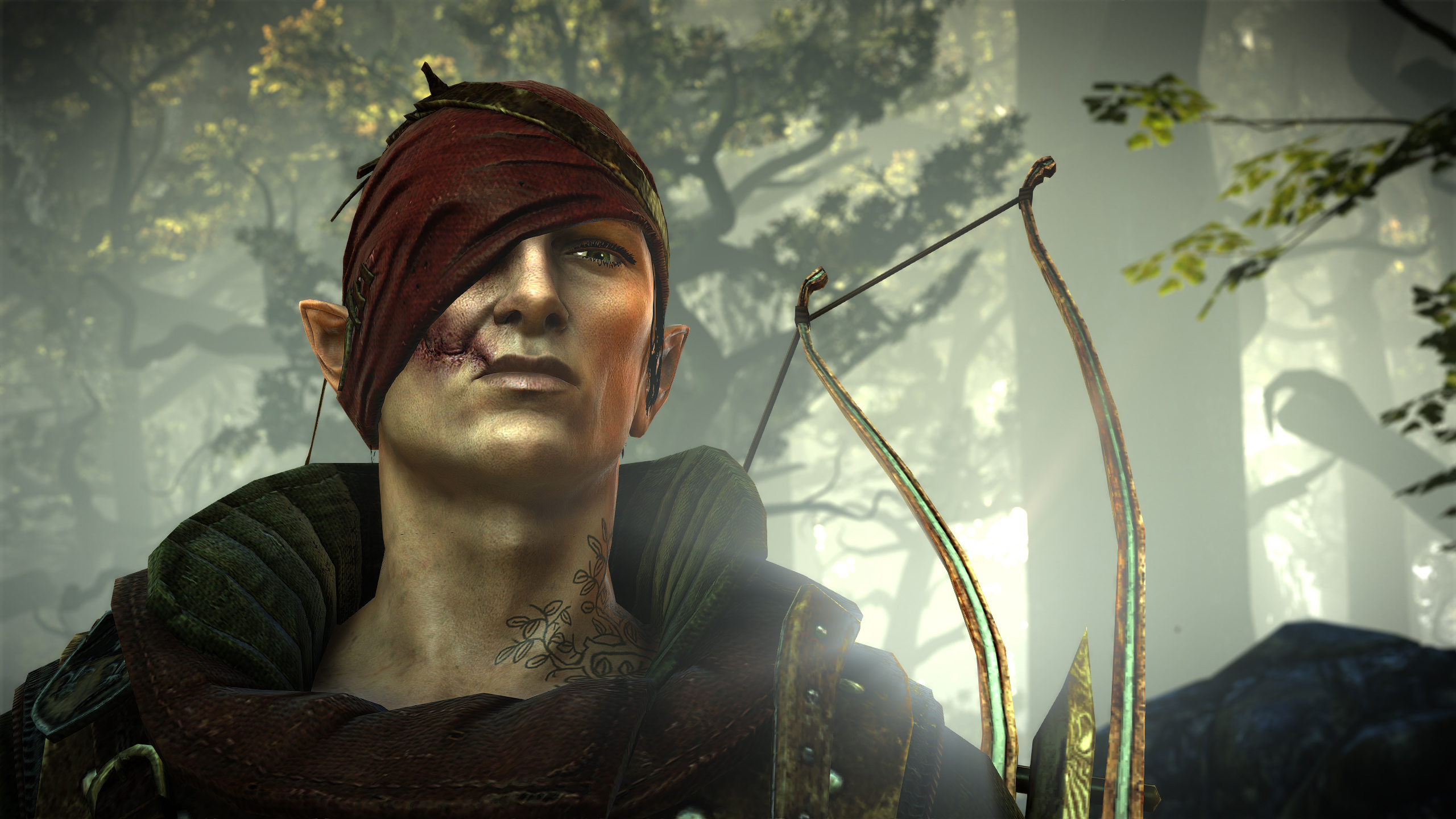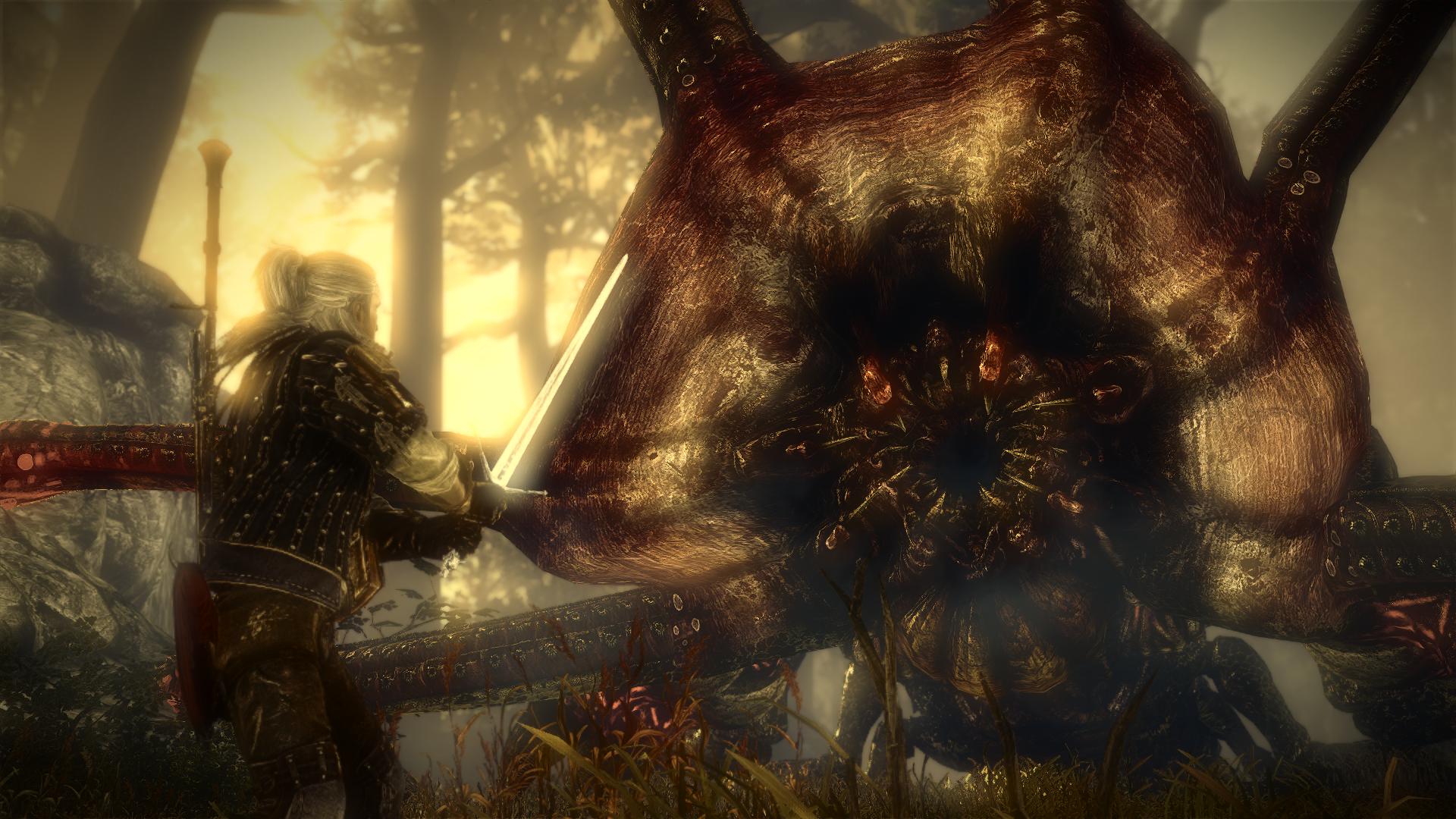Released: 19th May 2015 (Worldwide)
Developer: CD Projekt Red
Publisher: CD Projekt
Certificate: 18
Formats: PC, PlayStation 4, Xbox One
Format Played: PC
Since its beginnings in 2007, The Witcher series has
transcended its original literary material to become one of the most beloved
role-playing franchises in the gaming industry; it’s been a slow but committed
rise for CD Projekt Red as well who have refined their craft with every new
release. The trilogy (and indeed the entire series) comes to a close with The
Witcher 3: Wild Hunt, an outstanding and triumphant production on every level.
Following on from 2011’s Assassins of Kings, The Witcher 3
takes place in a time of chaos; what remains of the Northern Kingdoms has
thrown itself against the Nilfgardian empire to the south in a bloody war and
the witcher Geralt of Rivia (played by Doug Cockle in English) is caught up in
the events when two women missing for years return to his life; his original
lover Yennefer and their adopted daughter Ciri whose immense power has brought
the attention of the Wild Hunt, a spectral group of elven riders bent on
domination. Between the war, invading spectres and keeping those close to him
safe, Geralt must find Ciri as the end of the world approaches. The story is
vast, expansive and filled with deep, memorable characters voiced perfectly by
a quality cast while also taking Geralt to several settlements each with their
own individual issues that need resolving; the search for Ciri (which often dip
into playable flashbacks) is only the tip of the iceberg as every side quest
has its own unique story to tell; even the monster hunting quests come with
their own unique twists that make you question their motives and the
unfortunate humans caught up in their deeds. Sex and violence make many appearances
in such a grim and often brutal world, but it’s all handled very maturely,
respecting the deep story and characters; at times the story grows incredibly
dark, but it also finds time to mix in a fair bit of comedy and some incredibly
emotional moments that tug at the heartstrings. Of course, you as a player get
to shape this plot and the choices you make can have some dire consequences
down the line, extending all the way up to the ending which diverges based on
key moments through the main story. Even if you’ve never played a Witcher game
or read any of the books before (Though this gives a lot of extra context!),
Wild Hunt offers plenty of insight for newcomers; there’s a full character
encyclopaedia and the game also allows you to determine choices from the
Witcher 2 and bring them into the current save. In addition, the game also
shows short vignettes when booting up or reaching key plot points so you’re
always up to speed on Geralt’s journey. All told, The Witcher 3 offers a
cohesive, absorbing and conclusive tale that should be held as one of the best
fantasy narratives in recent memory.
Wild Hunt takes place in a massive open world which while
not quite fully interconnected, still bursts with detail, things to do and
places to explore; all of it is endlessly intriguing and you’ll be hard-pressed
to find another open-world with this level of immersion. It even extends right
down to the little touches, with settlements commenting on the results of side
quests upon revisits and the shifting of entire cities depending on story
progression. Travelling via foot, horseback and later by boat, exploring the
five separate regions plots hundreds of points on the map with fast travel
points ensuring that traversing it all never slows to a crawl; the question
marks you run into could be bandit camps, monster nests, lost treasure caches,
places of power (for extra upgrade points) or even full-on side-quests. In one
of the game’s more brilliant moments I stumbled across an abandoned village
rigged with traps, bumping into an important character and directly initiating
a quest from there. Other activities include horse racing and fist fights which
come with their own rewards. The only limits placed on you are the high-level
creatures that can swipe Geralt down in one or two swipes early on. Quests are
divided into four categories; story, secondary, monster contracts and treasure
hunts and there isn’t a single weak link between them with each offering plenty
of player choice unbound by a morality meter; main quests tell the story with
excellent dialogue and appearances from all sorts of fascinating characters,
side quests expose you to all kinds of twisted and often heart-wrenching tales
and monster hunter quests are often a journey of discovery and discipline.
Finding and slaying monsters adds them to the bestiary where you can read up on
their weaknesses and plan accordingly while the rewarding treasure hunts can
give Geralt some of the strongest equipment in the game; these lead into the
extensive crafting system which includes potion brewing with ingredients and
full-on armour and weapon sets built by blacksmiths. Some of the best moments in the game are character quests reminiscent of the loyalty missions in Mass Effect 2, contributing massive developments to specific arcs throughout the game. With such a massive world
to explore, it can become overwhelming but a detailed journal is always on hand
to keep track of every activity. Incredibly, none of it ever feels repetitive
either as the game sees fit to switch up the tasks depending on location and
characters. The final cherry on top is Gwent, a simple yet powerfully addicting
card mini-game that’s set to receive its own standalone title in the future; it
takes a little while to get into as your deck starts off weak but it’s hard not
to get hooked further down the line, especially when the bigger tournaments pop
up. CD Projekt Red’s magnum opus is gargantuan in its scale; it will take at
least 60 hours or more to finish every quest and that number can be tripled if
you plan to explore everything alongside the two meaty expansions that followed
its release.
With some gaps in gameplay throughout the series, the final
act of the trilogy presents The Witcher series at its most refined and
polished. Some issues do persist with finicky movement and controlling horses
can feel stiff but otherwise it’s a fluid ride all the way through. The user
interface is incredibly well organised with quick access keys leading to all
the essentials and other shortcuts such as a quick tap of the x key to call
Geralt’s horse do well at streamlining things. Geralt himself is far more
versatile here, clambering up ledges, diving beneath the waves and sliding down
hills in a very organic fashion, opening the game world up for full
exploration. When it comes to the combat itself, gameplay is easily the most
precise and tactical of the entire series. Geralt is locked into a combat stance, protecting his back by pointing towards the enemy; if you've played the more free-wheeling combat of Witcher 2, this can also take time to get into. Swapping between steel swords for
humans and silver swords for monsters, you’ll block, parry, dodge, tumble and
use potions and bombs to come out on top and as you go through the game Geralt
will acquire further upgrades depending on which upgrade trees you specialise
in. A fully upgraded igni sign allows for a stream of flames for example. Levelling
up feels considerably slower than other RPGs but it also affords you more
choice in abilities; specializing in combat allows for deadlier sword strikes
while upping alchemy will increase Geralt’s tolerance to potion toxicity. In
addition, mutagens (which are also craftable) can be paired up with specific
abilities, granting even more health points, magic intensity or sword damage.
What makes it all continuously enjoyable even after 50 hours of play is the
vast array of enemy behaviours. Human enemies wield different weapons and
monsters react differently with hundreds of unique animations; it’s a challenge
in itself to identify behaviours and adapt accordingly. Combined with the
levelling system, which brings more powerful loot as the game goes on, The
Witcher 3 delivers the most rewarding gameplay in the series aside a few
hiccups but none of them are enough to dampen the experience overall.
Rising above its slightly controversial graphical downgrade,
Wild Hunt looks breath-taking, even when running on less powerful hardware. The
weather effects look absolutely gorgeous and the same holds true of the
environments which are often deceivingly beautiful, given the dangers they
conceal; lush green forests, snow topped mountains and bustling towns, the
environmental variety here trumps everything seen in previous iterations.
Scaling tall mountains and hills gives way to some breath-taking vistas; often
I would pause, taking screenshots of the vast landscapes. The music is even
better with relaxing travel pieces seamlessly accompanying the environments and
immersing the player in the adventure. Combat pieces feature an antagonistic
blend of Celtic cries and string instruments, heightening the intensity of
battle. Being able to navigate a region without any load times is very impressive but one of the biggest improvements to the presentation is the facial
animations; far from the blank looking faces of games past, every character
emotes in a convincing way, further contributing to the believability of the
game’s story and characters. Excellent voice acting makes every line hit home
and the character designs, be they human or monster, are all exceptionally
detailed and well animated. The game runs well too, with the only dips in
framerate coming from the busier settlements in the game. Wild Hunt moves past
the goal of pushing current hardware to the limits, instead allowing its
meticulously crafted art design to carry the personality and tone.
All in all, The Witcher 3: Wild Hunt is simply an incredible
game. The rich story and characters, the challenging and accurate combat and the
beautiful yet unforgiving world, it all sits at the apex of open world design,
pulling together in one of the best role-playing games of all time. For a less
well-known developer on a drastically reduced budget, that’s a truly staggering
achievement.
Rating: 10/10 (Exceptional)

















